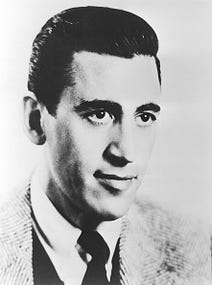|
 |
The Writer's Almanac from Monday, January 1, 2007
Excerpts from "You're the Top" by Cole Porter, from Selected Lyrics: Cole Porter. © Library of America.
It's New Year's Day, and it was on this day in the year 2000 that a technological disaster was supposed to occur but didn't, when the so-called Y2K bug failed to take down computers all over the world.
The computer bug was the result of a decision, back in the 1950s. At that time, computers were still using punch cards to feed information into computers, and in order to save space, the early programmers chose to represent the year as two numerals instead of four. So the year 1956 would be represented as just 56. No one at the time thought about what would happen if computers lasted until the end of the century.
IBM shipped their earliest computers with the same two-digit year embedded in the code, and it became the industry standard. A computer programmer named Robert Bemer was one of the first people to point out that sometime before the year 2000, computers would have to begin representing the year with four numerals. He published an article about the problem in 1971 and again in 1979, but nobody did anything.
It wasn't really until the 1990s that programmers began to realize that computers could be terribly confused when the year ticked over from 99 to 00. By that time, practically the whole world was run by computers. It suddenly seemed possible that at midnight on the first day of the year 2000, power plants and security systems and even nuclear reactors could go haywire when their computers couldn't figure out the date.
It might have seemed like an easy problem to fix, but most computers by 1999 were running on programs that had been written in incredibly complex computer code, and no one was exactly sure where the information about the date would be located in all that code. It turned out that about 1.2 trillion lines of code had to be checked.
After news stories about the problem became widespread, people around the country began to panic, stockpiling food and generators. The Federal Reserve worried about a run on cash with last-minute ATM withdrawals, so they printed an extra $50 billion. Some people thought that all the technology in the country would fail and that we'd be sent back to a kind of Stone Age. There were predictions of planes dropping from the sky, and nuclear weapons spontaneously exploding. American companies ultimately spent about $100 billion fixing the problem. And then, nothing happened.
It's the birthday of American writer J.D. Salinger, born in New York City (1919). He's one of the most famous living authors in America even though he hasn't published anything since 1965, and he's been living as a recluse since then. He's best known for his novel The Catcher in the Rye, about a boy named Holden Caulfield who gets expelled from his boarding school and spends the next few days wandering around New York City, trying to figure out why people have to grow older, why everyone is so phony, and where the ducks go when the pond in Central Park freezes over.
The Catcher in the Rye started out as a short story called "Slight Rebellion Off Madison," and it was the first story that Salinger managed to sell to The New Yorker. The New Yorker bought the story in November of 1941, and planned to run it in their Christmas issue. That December, Japan bombed Pearl Harbor, and Salinger's story was put on hold. It was considered too trivial in a time of war.
Salinger eventually expanded the story into the novel The Catcher in the Rye, which came out in 1951. The New York Times ran a review titled "Aw, the World's a Crumby Place" that poked fun at Salinger's style. The New Yorker refused to run any excerpts of the novel, because they said that the children in it were unbelievably intelligent, and the style of the novel was too "showoffy." But despite the mixed reviews, and the fact that Salinger refused to help with publicity, The Catcher in the Rye reached the best-seller list after being in print just two weeks, and it stayed there for more than six months. It made Salinger a literary celebrity, something that made him incredibly uncomfortable.
Be well, do good work, and keep in touch.®
Happy New Year! Garrison Keillor & Company will celebrate 50 years of A Prairie Home Companion this year! Hope you can join us for one of our upcoming shows. CLICK HERE for a schedule and ticket details.
If you are a paid subscriber to The Writer's Almanac with Garrison Keillor, thank you! Your financial support is used to maintain these newsletters, websites, and archive. If you’re not yet a paid subscriber and would like to become one, support can be made through our garrisonkeillor.com store, by check to Prairie Home Productions, P.O. Box 2090, Minneapolis, MN 55402, or by clicking the SUBSCRIBE button. This financial support is not tax deductible.


